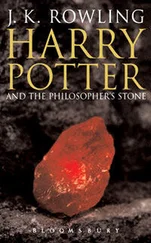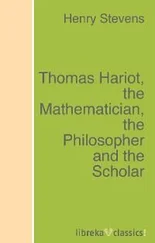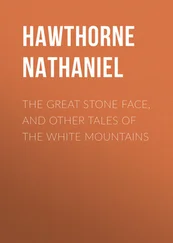“So those little coils that we find inside those energy-saving light bulbs produce light in the form of a plasma?” Marie asked.
“Sort of,” the professor replied. “Fluorescent tubes contain mercury vapor and a filler noble gas. 6 There is an electrical transformer in the lighting fixture that converts the normal AC voltage in our homes to a high voltage. In the presence of high voltage, the gases inside the glass tube form a plasma that radiates ultraviolet light. The inside of the fluorescent tube is coated with salts called phosphors that ‘fluoresce’ or produce visible light when they absorb ultraviolet light. So it is really the coating that provides the light that we see.
“On the other hand, the light that we see in the bright neon lights that are so common in night advertising is normally produced by collisions among the hot ions themselves. Most of the light that is produced by a fire or a candle actually arises mostly from glowing carbon particles. Otherwise, we might be able to see the plasma that exists in the vicinity of the wick or the wood.”
“I was not really aware of that,” Marie said. “I don’t recall ever hearing that a flame is an example of a plasma. I was vaguely aware that lightning and other electrical arcs conduct electricity by ionizing the air, but I hadn’t heard that the ionized air was an example of a material that is in its plasma state."
“It turns out that the hot, bright surface of the sun is also in such a plasma state. In fact, plasma is probably the predominant state of matter in the universe,” Professor Wood said.
“So it makes perfect sense to identify Plasma , along with Solid , Liquid and Gas , as the four basics states of matter that we can directly compare to the four elements that ancients had identified!” 7 Helen was ecstatic with this realization.
“Great!” said Professor Wood. “We are all together on this concept. Now let’s look at the diagram more closely. In this illustration, the red balls represent atoms, just as we are used to thinking of them in materials that are in a solid, liquid or gaseous state. The purple stars with the squarish ring around them are meant to represent ions and free electrons that are dissociated from the ions. The black lines correspond to boundaries in pressure and temperature that separate the states of this hypothetical substance.
“For example, if you raise the temperature of a liquid or reduce the pressure on its surface, you can get the substance to evaporate and turn into a gas. That boundary is represented by this diagonal black line.” Professor pointed to the somewhat vertical straight line near the center of the diagram.
“We call that line the boiling curve . You can see that the boiling point of this hypothetical substance changes substantially if you heat it at a slightly different pressure. Similarly, if you cool the liquid form of the substance enough, you could get it to freeze. In that case the material would condense to a solid. Then, if you reheated the solid, the substance would melt and turn into a liquid again. That boundary corresponds to the curved line that we call the melting curve on the right-hand side of the diagram. The black curved line on the left is the boundary between solid and gas.
As you can see from this phase diagram, these processes depend directly on the pressure and temperature of their environment.
“Phase diagrams like this can be rather complex for molecular substances because the molecules can also react chemically or break down and disintegrate at higher temperatures,” he went on to say.
Professor Wood continued his explanation of the prototypical phase diagram. “If you compare the picture of the ancient alchemists with this modern view, the landscape is now divided by these specific boundaries. On ordinary geographical maps, North is towards the top of the page. To the right is East, South is toward the bottom of the page and West is to the left. Usually the maps show a scale that can be used to gauge distances in meters, kilometers, or miles between locations on the map.
In this phase diagram, the upward direction corresponds to increasing temperature and the horizontal direction to increasing pressure toward the right. In the study of materials science, the phase diagrams of all the pure substances are represented by such maps in a kind of atlas for the world of high pressure. Since physicists and chemists today always measure everything precisely, the scales on the side and bottom are normally neatly labeled with numerical values for temperature and pressure in appropriate units. The boundaries between the various phases are similar to the boundaries between different countries in the geographic maps.
“The three-state corner here, near the middle of the chart, is known as a triple point. Three boundaries and three phase regions meet at this point. As I have already mentioned, the melting curve shows that the melting temperature is dependent upon pressure. For example, liquid mercury becomes solid when it is compressed at normal room temperature. Perhaps you know that ice initially melts under pressure, but you probably also know that this unusual behavior is a very special feature of water in the world of high pressure!”
“Does this slightly curved line to left of the triple point represent the pressure at which sublimationand its reverse process is called depositionoccur at different temperatures?” Helen asked, again feeling just a little self-satisfied at recalling the names of these transitions.
Professor Wood was impressed. “Very good, Helen!,” he said. “You can see from the portion of the line that is horizontal in this hypothetical substance that pressure plays a relatively minor role in those transitions. In other words, decreasing the pressure further does not change the temperature at which sublimation takes place. That is typical of most actual substances.”
Professor Wood continued his discussion of the prototypical phase diagram. “Note that the line that extends upward and separates the areas of gas and liquid has an endpoint. The location in temperature and pressure of this point varies considerably from substance to substance. This endpoint of the boiling curve is called the critical pointwith its characteristic values of the critical temperature and the critical pressure .”
“So how does this phase diagram compare with the ideas of the alchemists?” Helen asked.
“We can compare what is happening here to the old ideas of Democritus.” Professor Wood explained. “Democritus contended that the atoms move differently in all the substances. That is still the present view! In solids, the atoms or molecules are usually arranged at fixed locations but have small shaking vibrations. In liquids, the atoms move about in groups but maintain a kind of average distance from each other. Their vibrations about that average distance are stronger and faster than they were in the solid phase. The well-defined structure of a regular, solid crystal lattice breaks down into a dense irregular arrangement when the crystal melts.
“In a gas, the movements are wider and faster than in a normal liquid. Most atoms travel relatively long distances in free flight before they collide with another atom. As a result, the differences between a gas and a liquid on an atomic level reflect the frequency of the impacts, the range of the free flight and the average distance between the atoms. When a gas is compressed, the range of free flight and the average distance between the atoms all become smaller. The gas becomes denser and less compressible.”
Marie felt obliged to jump into the conversation at this point. “Engineers have made practical application of this fact in the design of the pneumatic and hydraulic devices that we commonly use in robotics and manufacturing processes. The pneumatic systems usually use air as the fluid that flows through the system and transfers energy among the various components. Hydraulic systems commonly use oil as the fluid because it simultaneously lubricates the internal surfaces of the system and that reduces wear. But there are plenty of other examples in which the particular application favors the choice of another liquid or gas.
Читать дальше












